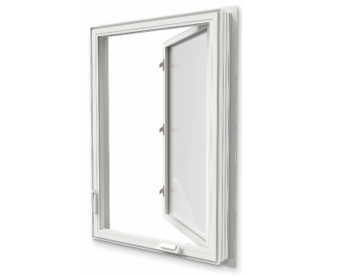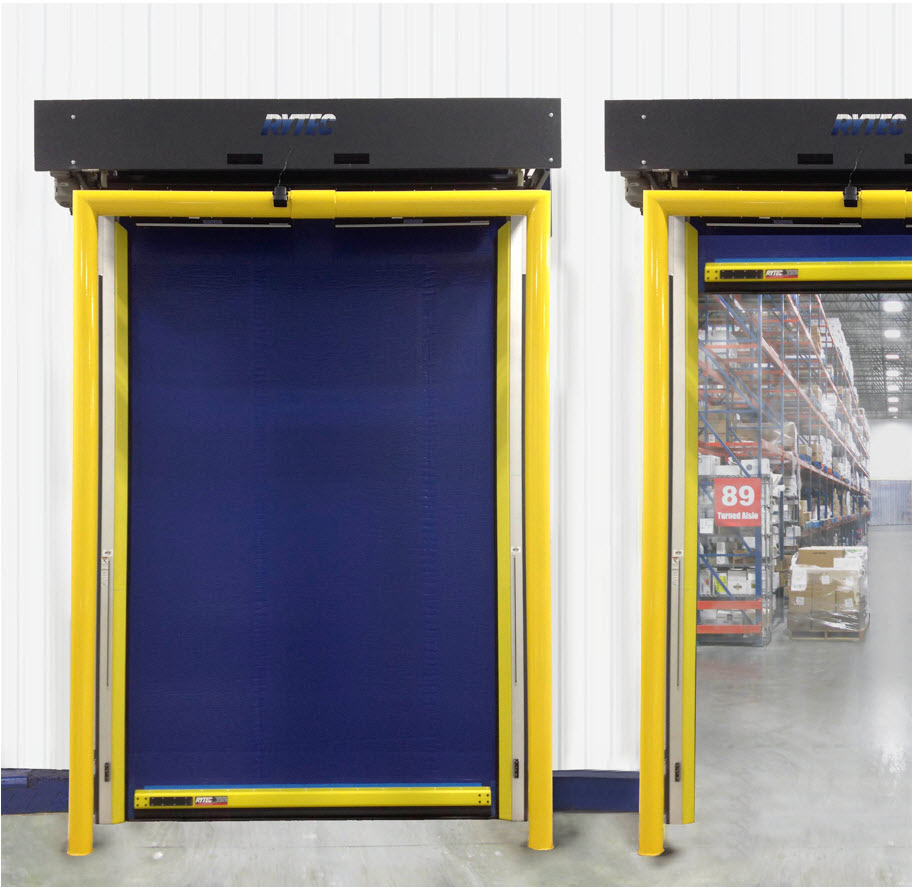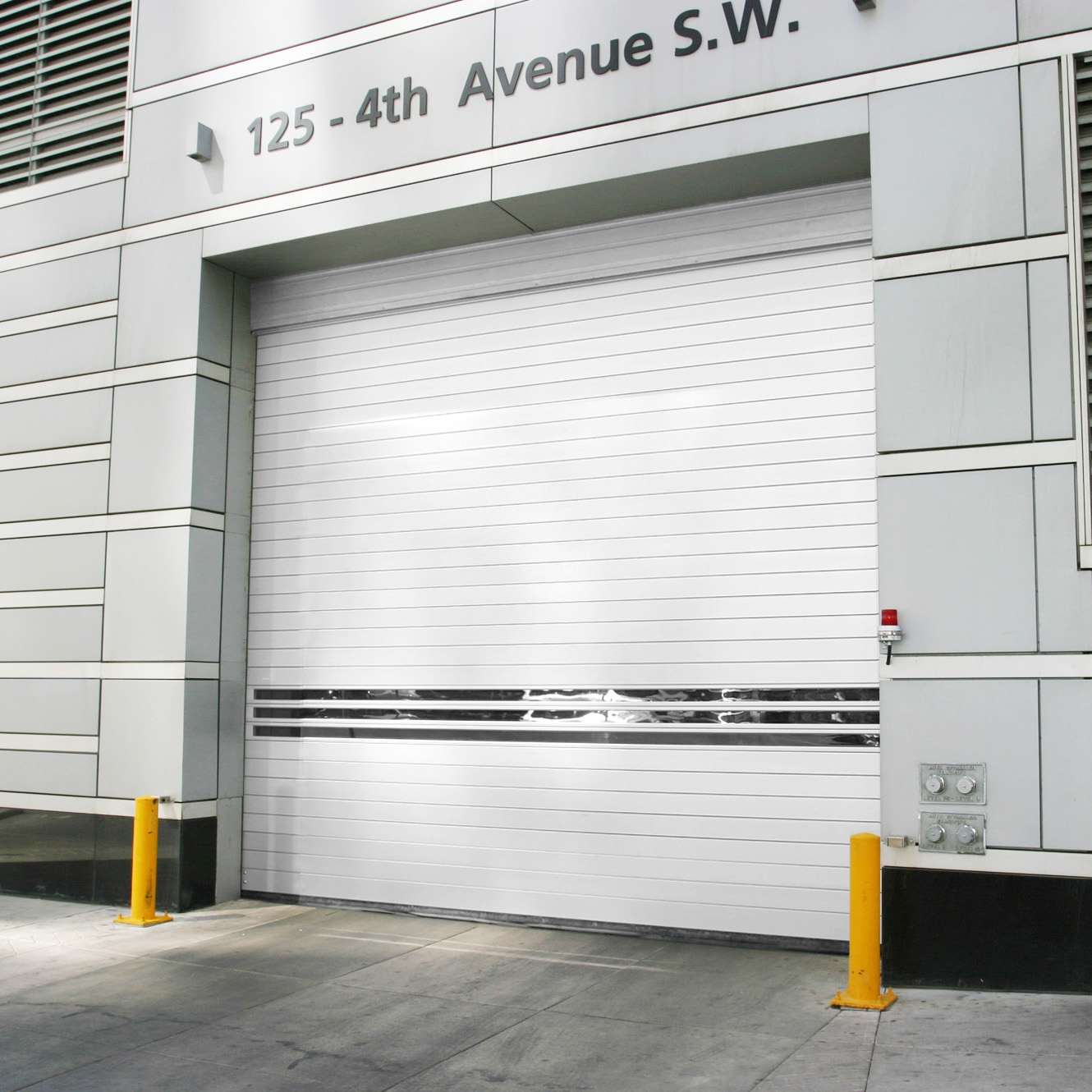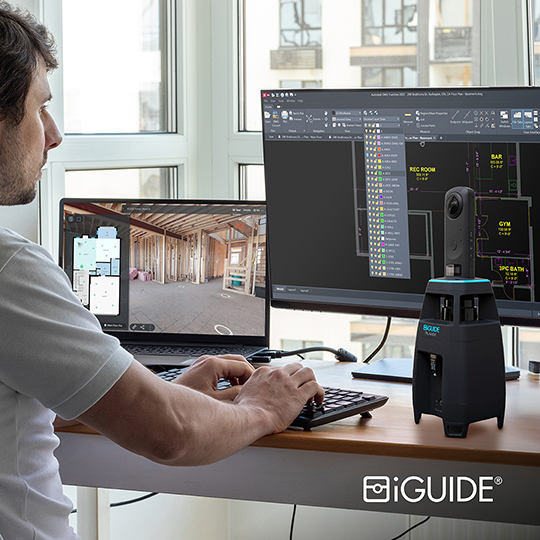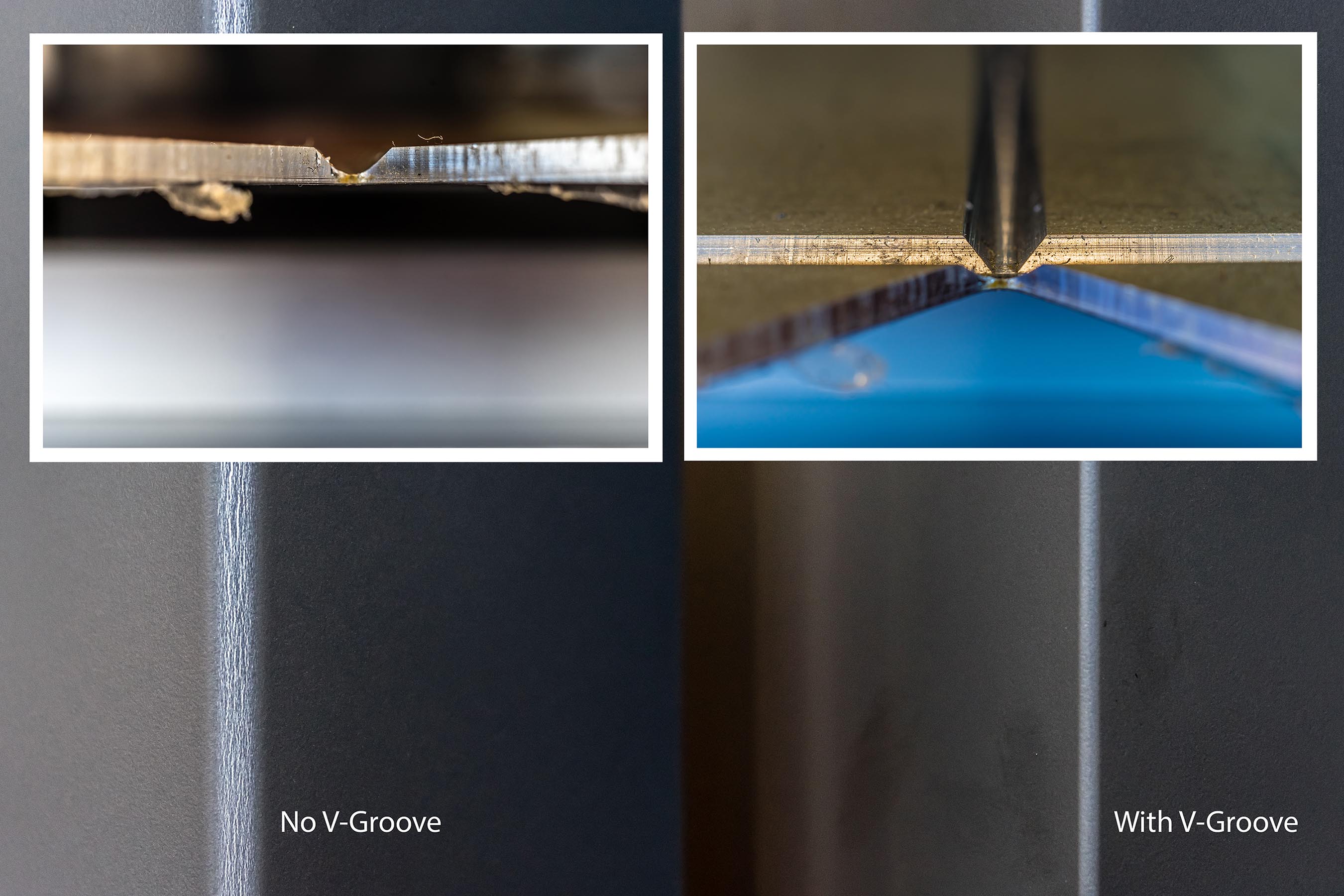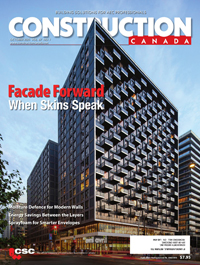Clearer guidelines: Fenestration sustainability

Property owners, specifiers, architects, and organizations are increasingly seeking sustainable products and building practices. To better educate industry stakeholders and customers about how fenestration and glazing systems can help construct environmentally friendly and energy-efficient buildings, the Fenestration and Glazing Industry Alliance (FGIA) has developed NSF International (NSF) 1102-23, the Product Category Rule (PCR) for Fenestration Assemblies, in collaboration with the National Glass Association (NGA) and the Window and Door Manufacturers Association (WDMA).
NSF 1102-23 provides manufacturers with the base document required to create an Environmental Product Declaration (EPD) for a building material or product. Formerly known as the Windows PCR, this updated and expanded version provides EPDs for exterior-grade, finished fenestration assemblies, including skylights, tubular daylighting devices (TDDs), and door systems, as well as curtain wall, window wall, and storefront systems.
Informed by third-party verified life-cycle assessments (LCAs) within the framework of a PCR, EPDs help building owners, product specifiers, design professionals, and others make accurate product comparisons required by some green building certification programs and a growing number of jurisdictions. An eco-label of the material/product, EPDs enable building teams to assess and compare the environmental impacts produced through the manufacturing of that material or product. EPDs also demonstrate a manufacturer’s commitment to sustainability and willingness to provide non-proprietary, environmental data with transparency and clarity. Additionally, they help companies understand how their product performs, from a sustainability perspective, in comparison to its competitors.
An LCA evaluates the environmental impacts of a material or product from extraction to when the product leaves the factory (cradle-to-gate). Other LCAs include the entire life cycle, including the end of the in-use phase (cradle-to-grave), and others are focused on a specific stage of the product’s life cycle (gate-to-gate). Manufacturers use the PCR and LCA data to help create a third-party verified EPD. Without a well-defined industry PCR, it is difficult for specifiers, architects, builders, and other EPD users to make accurate comparisons in today’s sustainability-conscious world.
NSF 1102-23 is important for reporting and standardizing EPD information for fenestration systems. It documents the goal and scope of LCAs for this category so that EPDs can be generated in accordance with ISO 14025:2006, Environmental Labels and Declarations—Type III Environmental Declarations—Principles and Procedures, and ISO 21930:2017, Sustainability in Building Construction—Environmental Declaration of Building Products.

Fenestration assembly defined
The PCR defines fenestration assemblies as “exterior-grade, finished, assembled fenestration assemblies that selectively permit the passing of air, daylight, or people.”
Fenestration assemblies can be provided by a single source, manufactured at multiple locations, or travel to different distribution or retail centre suppliers using industrywide components. Per ISO 21930:2017, products must be functionally equivalent, and the environmental indicators of the average composition shall not differ by more than ± 10 per cent of the individual.
The PCR defines the normalized “declared unit” as 1 m2 (11 sf) of fenestration assemblies for both framing and glass. Glazing beads and stops, sealants, gaskets, and other parts retaining or supporting the glazing are considered part of the framing assembly, and not the glazing system.
Fenestration assemblies may include insect screens, especially in the residential market, but they are not required for a fenestration assembly to function properly. Therefore, they are not included as part of the declared unit. However, where applicable, doors may be considered as part of fenestration assemblies (e.g. French doors, sliding doors).
Since manufacturers may make only the frame, and a building’s glazing may be a function of regional and customer preferences, EPD results must disclose LCAs as a total for the system, and separately for both the frame and glazing. This allows for better transparency for both industry and EPD users.
It is important to note that all non-optional components in fenestration assemblies must be included in EPDs, using NSF 1102-23 as a reference PCR, and cannot be excluded under the cut-off criteria. Table 1 (Modifications of Table 4-3 from ANSI/NFRC 100-2020 to accommodate fenestration assembly types covered by this PCR) lists the fenestration assemblies covered under this PCR.
The relative ratio of framing and glass for EPDs based on this PCR is derived from National Fenestration Rating Council (NFRC) standard sizes and configurations prior to normalization. This may or may not be representative of project-specific sizes and configurations on an individual building or a group of buildings. The product must also meet the relevant performance standards in American National Standards Institute (ANSI)/NFRC 100-2020, Procedure for Determining Fenestration Product U-Factors.

Life-cycle stages
The PCR has been developed to conform with ISO 21930:2017 and only uses the mandatory modules and life-cycle stages described in that standard.
The stages, called the construction works life cycle information within the system boundary, are separated into four phases: production, construction, use, and end-of-life stages.
Production stage
The mandatory production stage includes extraction and upstream production, transport to factory, and manufacturing.
Construction stage
The construction stage includes transport to the jobsite and installation.
Use stage
The use stage comprises use, maintenance, repair, replacement, refurbishment, operational energy use, and operational water use. The maintenance, repair, and replacement stages also include production, transport, and disposal of necessary materials.
End-of-life stage
The end-of-life stage includes deconstruction/demolition, transport to waste processing or disposal, waste processing, and waste disposal.
Table 1
| Product type | Opening (X) Non-operating (O) |
Model size (width × height) SI (IP) |
| casement – single | X | 600 x 1,500 mm (24 × 59 in.) |
| dual action | X | 1,200 × 1,500 mm (47 × 59 in.) |
| fixed | O | 1,200 x 1,500 mm (47 × 59 in.) |
| hinged escape | X | 1,500 × 1,200 mm (59 × 47 in.) |
| horizontal slider | XO or XX | 1,500 x 1,200 mm (59 × 47 in.) |
| JAL/jai awning | X | 1,200 x 1,500 mm (47 × 59 in.) |
| pivoted | X | 1,200 × 1,500 mm (47 × 59 in.) |
| projecting (awning – dual) |
XX | 1,500 x 1,200 mm (59 × 47 in.) |
| projecting (awning – single) |
X | 1,500 × 600 mm (59 × 24 in.) |
| door – sidelite | X or O | 680 × 2,090 mm (24 × 82.375 in.) |
| skylight/roof window | X | 1,200 x 1,200 mm (47 × 47 in.) |
| sliding patio door with frame | XO or XX | 2,000 x 2,000 mm (79 × 79 in.) |
LCA modelling framework
The LCA approach must follow both the modularity and polluter pays principles, as described in ISO 21930:2017. The EPD must include warranty periods either in the product description or in the additional environmental information section.

System boundaries
The material acquisition, preprocessing, intermediate processing, and processing stage starts when raw materials are extracted from nature (e.g. bauxite ore). This stage ends when intermediate materials (e.g. aluminum, glass, etc.) reach the gate of the production facility and are processed into the final product and packaged for shipping.
Materials can be considered “primary” or “secondary.” Inbound transportation will be included in life-cycle inventory (LCI) for the production stage. All transportation, including interfacility transport, before the material is shipped to the application site, must be included. If more than one primary data point is available for inbound transportation distances of a raw material, an average distance weighted by the transported mass may be calculated, and the methodology must be included in the EPD. All transportation by truck must be reported as round-trip. If a different vehicle class or more than one transportation mode is required, then the LCA model should use multiple transportation datasets to represent these, provided separate LCI datasets are available for the vehicles, modes, or both.
The waste and scrap created during raw material manufacturing, as well as the emissions associated with transporting them to the point of disposal, should also be accounted for in this stage. Additionally, waste and scrap created during the manufacture of the product should be included in the LCA model. When materials are sent to landfills, one must assume emissions will accumulate over 100 years. Due to the limited availability of data relative to waste generation, recycling, and disposal of fenestration assemblies, a conservative default of 100 per cent to landfill shall be used.

Criteria for the inclusion of inputs and outputs
In cases of insufficient input data or data gaps for a unit process, the cut-off criteria shall be one per cent of renewable primary resource (energy), one per cent of non-renewable primary resource (energy) use, one per cent of the total mass input of that unit process, and one per cent of environmental impacts. The total of neglected input flows per module shall be a maximum of five per cent of energy use, mass, and environmental impacts.
Data collection
Primary data is highly encouraged for products manufactured wholly or largely outside of the reporting company’s control (e.g. contracted products or assemblies). However, when primary data is unavailable, companies can use representative secondary data that is less than five years old. The data should represent the technology(ies) and process(es) currently in use.
Any delayed emissions from temporary carbon sequestration (e.g. through wood content or paper-based packaging material that eventually degrades) must be reported in the additional environmental information section.
Allocation for co-products
A fenestration assembly containing wood from an unmanaged forest may have negative CO2e associated with carbon flows in the production stage. However, if the product is assumed to break down and release carbon at end of life, then that release should be modelled according to ISO 21930:2017 Clause 7.2.7 even though it would occur outside the cradle-gate scope of this PCR. It must also be reported in the EPD’s additional environmental information section. This would also apply to biomaterial-based packaging materials.
All EPDs developed using this PCR are only expected to include information regarding the production stage or cradle-to-gate phase. Information pertaining to the product’s construction stage is optional because there is no single baseline regarding the uses of fenestration assemblies due to wide variations in use-case scenarios between various systems.
All relevant inputs must be included in LCA models except:
- Personnel impacts
- Research and development activities
- Business travel
- Any secondary packaging (e.g. pallets)
These have been excluded as they have a negligible environmental impact in the overall life-cycle performance of a fenestration assembly.

Average EPDs for similar products
Given the specifications of fenestration assemblies, average EPDs for groups of similar products may be necessary. For example, if Site A manufactures 80 per cent of the product system covered by the EPD and each kilogram of product manufactured requires 5 MJ of energy, whereas as Site B makes 20 per cent of the product and each kilogram of product manufactured requires 10 MJ of energy, the average energy used per kilogram would be 6 MJ [(80 per cent * 5)+ (20 per cent * 10)].
The same logic applies if multiple products are made at one site. For example, if a site manufactures five different products and the specific product being assessed only represents
10 per cent of the site’s output, then 10 per cent of the impacts occurring at that manufacturing site will be applied to that product’s LCA.
Impact assessment indicators
Mandatory impacts include Global Warming Potential (GWP), ozone depletion potential (ODP), Eutrophication Potential (EP), Acidification Potential (AP), and Photochemical Oxidant Creation Potential (POCP). LCIA category indicator results must be reported separately as cradle-to-gate scope, total life cycle, and separately for the framing and glazing.
Additional environmental information
EPDs developed using this PCR should include, where relevant, additional information related to environmental issues, apart from the environmental information derived from LCA, LCI, and information modules. Identification of the significant environmental aspects must conform to ISO 21930:2017 Clause 8.4 and ISO 14025:2006 Clause 7.2.4.
EPDs may also include the potential effects of emissions on human health and toxicity, and may also include:
- Data on fenestration product performance (where environmentally significant)
- Instructions and limits for efficient use
- Organization’s adherence to environmental management systems
- Environmental certification programs applied to the building product
- Other environmental activities of the organization, such as participation in recycling or recovery programs
- Preferred waste management option for unused or old/used fenestration assemblies
Emissions reporting guidelines
It is recommended to include greenhouse gas (GHG) emissions from land-use changes, when significant, when determining the product’s GWP. It is advisable to use internationally recognized methods, such as Intergovernmental Panel on Climate Change (IPCC) Guidelines for National Greenhouse Gas Inventories. The use of wood from sustainably managed forests is preferred, as assessed and certified by CSA, Forest Stewardship Council (FSC), Sustainable Forestry Initiative (SFI) Standards, etc.
Validity period
An EPD is typically valid for five years and then must be reviewed and reissued. Further, an EPD must be updated if product formulation changes create shifts in any of the environmental impact categories by more than 10 per cent.
As a final note, waste metrics were calculated per ISO 21930:2017. However, these values represent rough estimates and should not be used as actual cradle-to-gate waste performance between products.
This PCR is valid until December 31, 2028. Companies can use this PCR to help them develop EPDs, thereby highlighting their sustainability credentials to potential customers.
Author
Amy Roberts is the Canadian code and advocacy director for the Fenestration and Glazing Industry Alliance (FGIA). She leads FGIA’s Canadian codes and regulatory initiatives with a focus on building and energy codes, standards development, and industry advocacy. In her role, she also supports the FGIA FENBC Region, working closely with stakeholders to represent industry interests at both regional and national levels. With more than 25 years of experience in glass and insulating glass (IG) manufacturing, as well as residential and commercial window production, Roberts brings deep technical expertise and strategic insight to advancing the Canadian fenestration and glazing industry. She can be reached at aroberts@fgiaonline.org.


